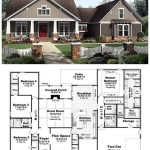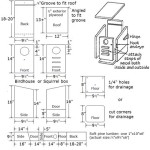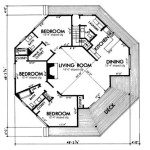House plan drawing refers to the technical drawings and diagrams that depict the architectural design, layout, and specifications of a house. These drawings serve as a blueprint for the construction and renovation of residential buildings, providing detailed information about the structure’s dimensions, room arrangements, and building systems.
In practice, house plan drawings are essential for obtaining building permits, ensuring compliance with local regulations, and facilitating effective communication between architects, engineers, contractors, and homeowners. They enable stakeholders to visualize the proposed design, plan for materials and resources, and coordinate construction efforts efficiently.
Transition Paragraph:
This article will delve into the key components and considerations involved in house plan drawing, exploring the types of drawings, industry standards, and best practices that contribute to the successful design and construction of residential structures.
House plan drawing encompasses various critical elements that ensure the successful design and construction of residential buildings. Key points to consider include:
- Floor plans
- Elevations
- Sections
- Details
- Schedules
- Site plans
- Material specifications
- Building codes
- Sustainability
- Accessibility
These elements collectively provide a comprehensive representation of the house design, ensuring that all aspects of the building are carefully planned and documented.
Floor plans
Floor plans are two-dimensional drawings that depict the layout of a house from above. They show the arrangement of rooms, walls, doors, windows, and other structural elements on each level of the building.
- Overall layout: Floor plans provide a bird’s-eye view of the house’s layout, allowing architects and homeowners to visualize the flow of space and the relationships between different rooms and areas.
- Room dimensions and proportions: Floor plans include precise measurements of each room, including their length, width, and height. This information is crucial for determining the amount of space available for furniture, appliances, and other interior elements.
- Circulation and flow: Floor plans illustrate the pathways and connections between rooms, ensuring that the house is easy to navigate and that there is a logical flow of movement throughout the space.
- Structural elements: Floor plans indicate the location of load-bearing walls, columns, and other structural components. This information is essential for ensuring the stability and safety of the building.
Overall, floor plans are essential for visualizing the spatial organization of a house and for coordinating the placement of various elements within the structure.
Elevations
Elevations are two-dimensional drawings that depict the exterior walls of a house as if they were unrolled onto a flat plane. They show the height, width, and depth of the building, as well as the placement of windows, doors, and other architectural features.
Elevations are essential for visualizing the overall appearance of a house and for ensuring that the exterior design is cohesive and balanced. They also provide important information for construction, such as the height of walls, the pitch of the roof, and the location of openings.
There are four main types of elevations: front, rear, left, and right. The front elevation is the most important, as it is the face of the house that is most visible from the street. The rear elevation is less visible, but it is still important to ensure that it is visually appealing and complements the overall design of the house.
Elevations are typically drawn to scale, which means that they accurately represent the actual dimensions of the house. This allows architects and homeowners to visualize the house in three dimensions and to make informed decisions about the exterior design.
In addition to the four main elevations, there may also be detail elevations that show specific areas of the house in more detail. For example, there may be a detail elevation of the front porch or the rear deck. Detail elevations are useful for providing more information to contractors and for ensuring that the house is built according to the architect’s design.
Sections
Sections are two-dimensional drawings that depict a house as if it were cut vertically through the middle. They show the interior structure of the house, including the framing, walls, floors, and roof. Sections are used to illustrate the relationship between different parts of the house and to show how the house is put together.
- Vertical sections: Vertical sections cut through the house from top to bottom. They show the height of the house, the thickness of the walls, and the location of the floors and roof. Vertical sections are used to illustrate the overall structure of the house and to show how the different parts of the house fit together.
- Horizontal sections: Horizontal sections cut through the house from side to side. They show the layout of the house on each level and the relationship between the different rooms. Horizontal sections are used to illustrate the flow of space within the house and to show how the different rooms are connected.
- Detailed sections: Detailed sections show specific areas of the house in more detail. For example, there may be a detailed section of the kitchen that shows the layout of the cabinets and appliances. Detailed sections are used to provide more information to contractors and to ensure that the house is built according to the architect’s design.
- Cross sections: Cross sections cut through the house at an angle. They show the relationship between different parts of the house that are not visible in a vertical or horizontal section. Cross sections are often used to illustrate complex architectural features, such as staircases or vaulted ceilings.
Sections are an essential part of house plan drawing. They provide valuable information about the structure and design of the house, and they help to ensure that the house is built according to the architect’s intent.
Details
Details are an essential part of house plan drawing. They provide specific information about the construction and finishes of the house, and they help to ensure that the house is built according to the architect’s design.
Details are typically drawn to scale, which means that they accurately represent the actual dimensions of the house. They may include information such as the type of materials to be used, the size and location of windows and doors, and the details of trim and molding.
There are many different types of details that can be included in a house plan drawing. Some of the most common types include:
- Construction details: Construction details show how the house is to be built. They may include information such as the type of foundation to be used, the framing details, and the roofing materials.
- Finish details: Finish details show how the house is to be finished. They may include information such as the type of flooring to be used, the paint colors, and the lighting fixtures.
- Millwork details: Millwork details show the details of the trim and molding in the house. They may include information such as the type of wood to be used, the profile of the molding, and the location of the millwork.
- Hardware details: Hardware details show the details of the hardware in the house. They may include information such as the type of doorknobs to be used, the type of hinges to be used, and the type of window locks to be used.
Details are an important part of house plan drawing. They provide valuable information about the construction and finishes of the house, and they help to ensure that the house is built according to the architect’s design.
Schedules
Schedules are an essential part of house plan drawing. They provide a summary of the materials and finishes that are to be used in the construction of the house. Schedules are typically organized by room, and they may include information such as the type of flooring to be used, the paint colors, and the lighting fixtures.
- Door schedule: The door schedule lists all of the doors in the house, along with their size, location, and type of hardware. This information is important for ensuring that the correct doors are ordered and installed in the house.
- Window schedule: The window schedule lists all of the windows in the house, along with their size, location, and type of glass. This information is important for ensuring that the correct windows are ordered and installed in the house.
- Finish schedule: The finish schedule lists all of the finishes that are to be used in the house, such as the type of flooring, the paint colors, and the lighting fixtures. This information is important for ensuring that the house is finished according to the architect’s design.
- Hardware schedule: The hardware schedule lists all of the hardware that is to be used in the house, such as the doorknobs, the hinges, and the window locks. This information is important for ensuring that the correct hardware is ordered and installed in the house.
Schedules are an important part of house plan drawing. They provide valuable information about the materials and finishes that are to be used in the construction of the house, and they help to ensure that the house is built according to the architect’s design.
Site plans
Site plans are drawings that show the relationship between a house and its surrounding property. They include information such as the location of the house on the lot, the driveway, the landscaping, and the property lines.
Site plans are important for a number of reasons. First, they help to ensure that the house is properly sited on the lot. This means that the house is in the correct location and orientation, and that it has adequate access to sunlight and ventilation. Second, site plans help to plan the driveway and landscaping. This ensures that the driveway is properly sized and located, and that the landscaping complements the house and the surrounding property.
Third, site plans are required by most municipalities before a building permit can be issued. This is because site plans help to ensure that the house meets local zoning regulations. Zoning regulations are laws that govern the use of land and the placement of buildings on that land.
Site plans are typically drawn to scale, which means that they accurately represent the actual dimensions of the property. They may include information such as the following:
- The location of the house on the lot
- The size and shape of the lot
- The location of the driveway
- The location of the landscaping
- The location of the property lines
- The location of any easements or other restrictions on the property
Site plans are an important part of house plan drawing. They help to ensure that the house is properly sited on the lot, that the driveway and landscaping are properly planned, and that the house meets local zoning regulations.
Material specifications
Material specifications are an essential part of house plan drawing. They provide information about the materials that are to be used in the construction of the house, such as the type of wood, the type of roofing, and the type of windows. Material specifications are important for a number of reasons. First, they help to ensure that the house is built according to the architect’s design. Second, they help to control the cost of construction by specifying the types of materials that are to be used.
- Type of wood: The type of wood that is used for framing, siding, and other structural elements of the house is an important decision. Different types of wood have different properties, such as strength, durability, and resistance to rot. The architect will specify the type of wood that is to be used based on the climate, the design of the house, and the budget.
- Type of roofing: The type of roofing that is used is also an important decision. Different types of roofing have different properties, such as durability, fire resistance, and cost. The architect will specify the type of roofing that is to be used based on the climate, the design of the house, and the budget.
- Type of windows: The type of windows that are used is also an important decision. Different types of windows have different properties, such as energy efficiency, durability, and cost. The architect will specify the type of windows that are to be used based on the climate, the design of the house, and the budget.
- Type of insulation: The type of insulation that is used is also an important decision. Different types of insulation have different properties, such as thermal resistance, moisture resistance, and cost. The architect will specify the type of insulation that is to be used based on the climate, the design of the house, and the budget.
Material specifications are an important part of house plan drawing. They help to ensure that the house is built according to the architect’s design, that the cost of construction is controlled, and that the house is energy efficient and durable.
Building codes
Building codes are regulations that govern the design and construction of buildings. They are in place to ensure that buildings are safe, structurally sound, and energy efficient. Building codes are developed by government agencies and are typically based on national standards. When creating house plans, architects must adhere to the building codes in their jurisdiction.
- Structural safety: Building codes ensure that houses are structurally sound and can withstand the forces of nature, such as wind, snow, and earthquakes. The codes specify the minimum requirements for the strength and size of structural elements, such as foundations, walls, and roofs.
- Fire safety: Building codes also include fire safety requirements. These requirements are designed to prevent fires from starting and spreading, and to provide a safe means of escape in the event of a fire. The codes specify the types of materials that can be used for construction, the installation of smoke detectors and sprinkler systems, and the width of hallways and stairwells.
- Energy efficiency: Building codes increasingly include energy efficiency requirements. These requirements are designed to reduce the amount of energy that a house consumes. The codes specify the minimum levels of insulation that must be installed, the types of windows and doors that can be used, and the efficiency of heating and cooling systems.
- Accessibility: Building codes also include accessibility requirements. These requirements are designed to ensure that houses are accessible to people with disabilities. The codes specify the width of doorways, the height of countertops, and the installation of ramps and grab bars.
Building codes are an important part of house plan drawing. They help to ensure that houses are safe, structurally sound, energy efficient, and accessible. When creating house plans, architects must carefully consider the building codes in their jurisdiction to ensure that their designs comply with the law.
Sustainability
Sustainability is an important consideration in house plan drawing. Sustainable design practices can help to reduce the environmental impact of a house, lower energy costs, and create a healthier living environment. When creating house plans, architects can incorporate a variety of sustainable features, such as:
- Energy efficiency: Energy-efficient house plans can help to reduce energy costs and greenhouse gas emissions. Architects can incorporate a variety of energy-efficient features into their designs, such as high-performance windows and doors, efficient lighting and appliances, and solar panels.
- Water conservation: Water-conserving house plans can help to reduce water usage and protect water resources. Architects can incorporate a variety of water-conserving features into their designs, such as low-flow toilets and faucets, rainwater harvesting systems, and drought-tolerant landscaping.
- Material selection: The selection of sustainable building materials can help to reduce the environmental impact of a house. Architects can specify materials that are recycled, renewable, or sustainably harvested. They can also specify materials that have low embodied energy, which is the energy required to extract, process, and transport the materials.
- Site planning: Sustainable site planning can help to reduce the environmental impact of a house and create a more livable community. Architects can orient the house to take advantage of natural light and ventilation. They can also design the site to minimize stormwater runoff and protect natural habitats.
By incorporating sustainable design practices into house plans, architects can help to create homes that are more environmentally friendly, energy-efficient, and healthy.
Accessibility
Accessibility is an important consideration in house plan drawing. Accessible design features make it possible for people with disabilities to live independently and participate fully in society. When creating house plans, architects can incorporate a variety of accessibility features, such as:
- Zero-step entry: A zero-step entry means that there is no step or threshold at the entrance to the house. This makes it easier for people with mobility impairments to enter and exit the house.
- Wide doorways: Wide doorways allow people with wheelchairs or other mobility aids to easily move through the house. The minimum recommended width for a doorway is 32 inches.
- Accessible bathrooms: Accessible bathrooms include features such as roll-in showers, grab bars, and raised toilets. These features make it easier for people with mobility impairments to use the bathroom safely and independently.
- Universal design: Universal design is a design approach that creates products and environments that are accessible to people of all abilities. When designing houses, architects can incorporate universal design principles to make the house more accessible to everyone, regardless of their age, ability, or disability.
By incorporating accessibility features into house plans, architects can help to create homes that are more inclusive and welcoming to people with disabilities.










Related Posts








